Steam ejectors
 Steam ejector
Steam ejector
- Max working temperature: 220 (°C)
- Material: carbon steel/ductile iron
- Max operating pressure: 16 bar
 Individual heating station of the heating system according to an independent connection scheme
Individual heating station of the heating system according to an independent connection scheme
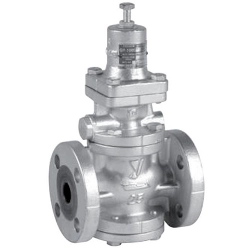 Reducing valve for steam Yoshitake GP-1000EN
Reducing valve for steam Yoshitake GP-1000EN
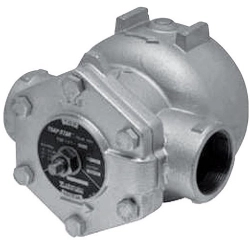 Float steam trap Yoshitake TSF-10
Float steam trap Yoshitake TSF-10
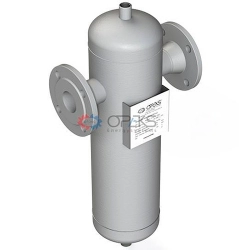 Centrifugal steam separator OPEKS-1-SC16-1-F50
Centrifugal steam separator OPEKS-1-SC16-1-F50
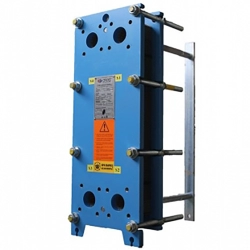 Plate heat exchanger THERMAKS РТА (GC)-16
Plate heat exchanger THERMAKS РТА (GC)-16
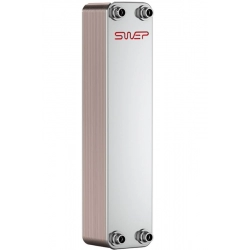 Brazed heat exchanger SWEP B25T
Brazed heat exchanger SWEP B25T
 Brazed heat exchanger SWEP B25THx20
Brazed heat exchanger SWEP B25THx20
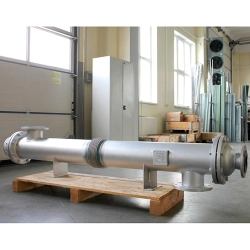 Shell and tube coolers
Shell and tube coolers
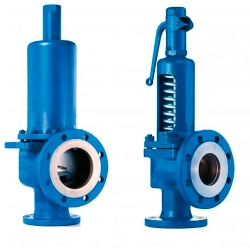 Safety valve LESER 441/442
Safety valve LESER 441/442
Steam ejectors
In general, an ejector is a thermodynamic device in which the kinetic energy of one mobile medium is transferred to another mobile medium. Accordingly, in a steam ejector, the medium transmitting its kinetic energy is usually high-potential (live) steam of steam power and heat exchange units, which has a high operating pressure (25 - 40 MPa) and a superheat temperature of up to 545 - 560 degrees C.
Working fluids and areas of application of steam ejectors
The media to which the kinetic energy of live steam is transferred are usually:
- Low-grade saturated steam, in systems for removing steam condensate of steam power and heat exchange plants, as well as Yankee plants used in the papermaking process. Steam ejectors (or thermocompressors) in this case are used in the subsystems for the removal and utilization of condensate steam from secondary flashing, in the so-called recompression mode.
- Air or other gaseous medium, to create the necessary conditions for vacuum (evacuation) in the process tanks. With the help of steam ejectors in vacuum installations, an internal vacuum (evacuation) is created with a pressure of up to 75 mm Hg, and in multistage installations - up to several microns of Hg.
- Water, steam condensate, technical and technological fluids, as harmful media in technological installations and steam power machines, requiring removal. \ To remove them, steam ejectors are used as part of water-jet, steam-mercury, steam-oil jet pumps.
Jet pumps are used in various branches of technology, industry and economy, for:
- dehumidification of the steam space, removal of condensate from steam power and heat exchange units (the so-called recirculation mode for steam ejectors), in order to intensify the passage of heat exchange processes.
- rapid removal (emergency pumping) of water in ship pumping systems;
- removal of oil vapors, mercury and other harmful substances in a variety of technological installations and steam power machines.
- as steam jet injectors, in water make-up systems for high-pressure steam boilers.

Construction and principle of operation of the steam ejector
The principle of operation of a steam ejector is based on a direct consequence of Bernoulli's law (Venturi effect), according to which a pressure drop of a moving medium is observed in a closed working space with an increase in its speed. In a steam ejector, the high-grade medium is passed through a converging nozzle, where it acquires a high speed of movement, while the pressure drops. The resulting high-speed jet, entering the suction chamber (in which the low-grade medium is located), creates a vacuum behind it, thereby entraining the pumped-out low-grade medium into the mixing chamber.
As a rule, there is an annular gap between the nozzle and the mixing chamber, connecting them with the space of the suction chamber, through which the pumped medium is sucked in. Subsequently, the mixed high-potential and pumped media from the mixer enter the expanding diffuser, where the mixture, expanding and decelerating, acquires the required high pressure for further transportation.
Thus, the basic design of the steam ejector is very simple and includes the following main units and parts:
- The inlet steam line with a narrow-jet nozzle.
- Suction chamber with pumped medium supply.
- Mixing chamber.
- Diffusion chamber with expanding venturi.
- A control system (for controlled versions of ejectors), with the help of which the supply of a high-potential medium (live steam) is regulated, and the position of the nozzle relative to the mixing chamber changes, respectively, the parameters of the annular gap of the suction of the removed medium.
Advantages and Disadvantages of Steam Ejectors
The obvious advantages of a steam ejector over mechanical evacuation pumps are:
- Structural simplicity (it actually works without the presence of moving parts and friction units), which leads to a very high reliability in operation and a huge working resource of the apparatus.
- The cheapness of the device in installation and operation, no need for consumables and operating materials.
- The independence of the device from the availability of power supply and the stability of the power grid parameters.
- The ability to return to the system low-potential steam, for example, which was previously released into the environment.
At the same time, the disadvantages of steam ejectors include:
- Low efficiency in work. However, in classical steam ejectors (thermocompressors) operating in the condensate removal subsystems of steam power plants and heat exchangers in order to remove secondary boiling steam, the total efficiency remains quite high due to the utilization of energy simultaneously from both live and secondary steam.
- The impossibility of obtaining a clean pumped medium, only in a mixture with water vapor and its condensation products. In this connection, the scope of application of steam ejectors is limited to systems: removal of harmful substances; evacuation; utilization of water vapor (water vapor).
Steam ejectors OPEKS Power systems
OPEKS Energosystems, a company specializing in the production and supply of modern energy efficient equipment for various technological purposes, is ready to offer its customers comprehensive solutions. The list of offered equipment for industrial tasks includes steam ejectors and ready-made systems based on them.
The steam ejectors available in the assortment of OPEKS Energysystems have a classic design for use in steam-steam systems for the removal and utilization of condensate steam from secondary boiling of steam power machines, heat exchangers and Yankee installations. OPEKS steam ejectors are made of carbon or stainless steel, in a controlled version (with a GP-1000 or GP-2000 pressure regulator), for modes with a maximum operating pressure of up to 2.5 MPa and an operating temperature of up to 400 degrees C.

